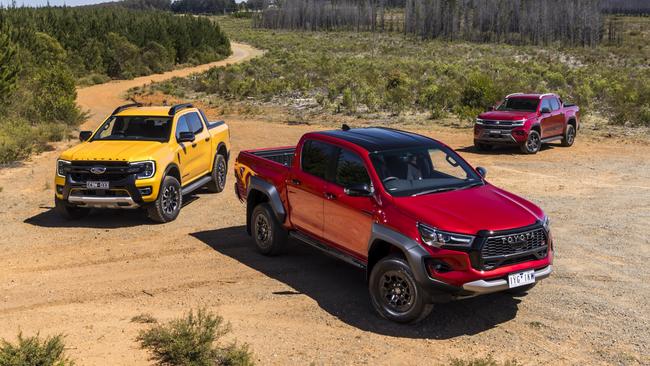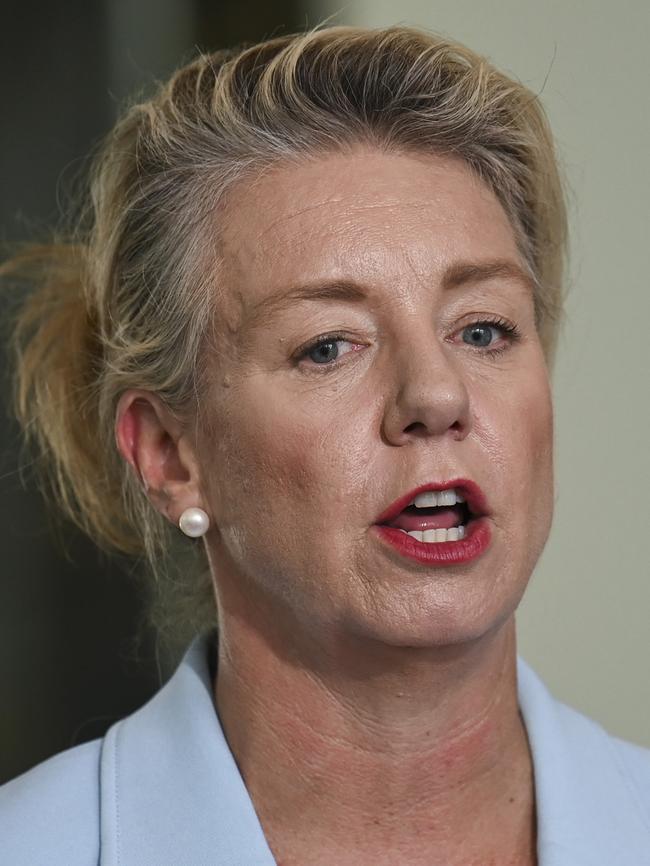Car industry warning over ‘scale’ and ‘timeline’ of Labor’s emissions standards plan
Australians could pay up to $25,000 more for popular utes and SUVs, while hybrid vehicles may cop a penalty of up to $5000 in five years’ time under Labor’s emissions proposal.

National
Don't miss out on the headlines from National. Followed categories will be added to My News.
Australians could pay up to $25,000 more for popular utes and SUVS, while many hybrid vehicles may cop a penalty of up to $5,000 in five years time under Labor’s emissions proposal.
The federal government has come under fire from the motoring industry for pledging to rapidly accelerate the efficiency of Australian cars to match the US by 2028, just as reports emerge the Biden Administration is considering slowing the pace of its own standards.
Labor has pledged to introduce fuel efficiency standards for new cars by next year, which would increase by about 60 per cent over five years under the government’s preferred option.
The government has rejected claims this will force up the price of any vehicle, and argued motorists would save up to $1000 a year on fuel under the changes.
But new analysis shows the Ford Ranger, the top-selling car in 2023, would incur a penalty of between $11,350 and $17,950 under the proposed 2029 CO2 target, according to estimates compiled by the Federal Chamber of Automotive Industries (FCAI).

A Toyota LandCruiser would be penalised between $19,580 and $25,050, while a Mitsubishi Outlander would face a penalty of between $11,650 and $12,390.
Petrol cars would not be the only vehicles effected, with some current hybrid models forecast to incur a penalty over time.
A hybrid Toyota RAV4 would start being stung from 2027 with a penalty of $1490 that would increase to $4890 by 2029.

Other hybrids such as the Honda CR-V, Lexus NX, Toyota Corolla and Hyundai Santa Fe would all incur penalties within three to five years.
The figures, which assume the same drive-train or engine as 2023 with no improvement, are based on the highest CO2 emitting variant of each model, compared with the 2029 target at the penalty rate.
No specific model or type of car would be banned under Labor’s proposal, but manufacturers would be required to meet an overall emissions target across their average fleet.
FCAI chief executive Tony Weber said Australia should heed recent media reports US President Joe Biden is considering giving manufacturers more time to reach ambitious 2030 efficiency targets.
“It indicates the authorities in the US are now starting to question whether the technology will be available at a suitable price point prior to 2030 that matches their previous ambition,” he said.


Mr Weber said there was “no fat in the system” in Australia for car manufacturers to bank credits to offset petrol cars and maintain current prices, meaning they would have to pass on penalty costs to consumers.
“The level of ambition Australia is talking about over the next five years has not occurred anywhere else, there is no international example for that time frame,” he said.
Climate Change and Energy Minister Chris Bowen has rejected FCAI analysis of the CO2 penalties, insisting “no model” of car in Australia would go up under the proposal.
“More fuel efficiency means cost of living relief for Australians every single week they fill up at the bowser,” he said.
Coalition transport spokeswoman Bridget McKenzie said Labor’s plan for efficiency standards would hurt consumers.
“In his mad rush to shift the price dial toward electric vehicles, Mr Bowen is proposing to penalise Australia’s most popular family cars,” she said.
More Coverage
Originally published as Car industry warning over ‘scale’ and ‘timeline’ of Labor’s emissions standards plan





